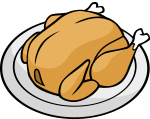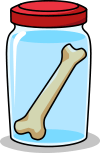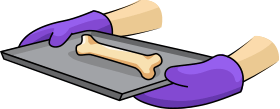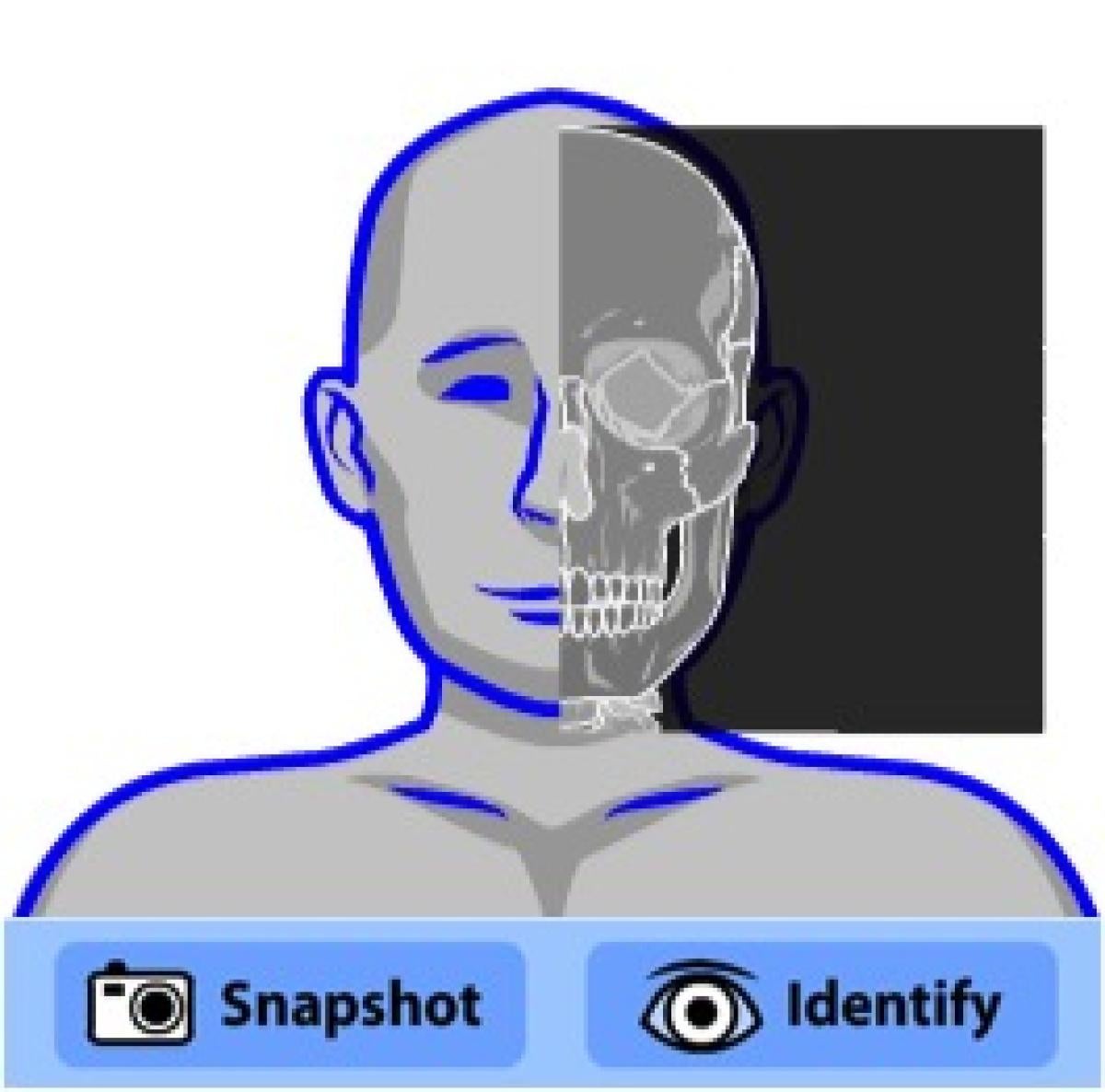Experiments
Bones need to be both strong and flexible in order to do their job. Bones that are strong but not flexible will be brittle and easily broken. However, if bones are flexible but not strong, they would not support the weight of your body or the stress from your muscles pulling on them.
What makes tough bones?
The strength of your bones depends on what you eat. You may have heard that drinking milk is good for you. This is partly because milk contains a lot of calcium, the mineral that makes your bones strong. The flexibility of your bones depends on collagen. You get collagen from eating dark-green vegetables such as asparagus, spinach, and kale.

Try It Yourself!
Try this neat experiment to see what happens when bones lose their strength or flexibility. First, you'll need some bones. Chicken leg bones will work best. You can get these from a grocery store or restaurant after a chicken dinner.

Bending Bones
Step 1: Get two dry, clean bones of about the same shape and size. Make sure you've removed all the meat from around these bones.
Step 2: With the help of an adult, put one of the bones in a jar or bowl filled with vinegar. Make sure the entire bone is completely covered with vinegar. Put a lid or layer of plastic wrap over it to keep the vinegar smell from getting out. Wrap the second bone in plastic wrap and place it next to the jar.
Step 3: After three days, remove the first bone from the jar and rinse it off with water.
Step 4: Try to bend the bone that wasn't soaked in vinegar. What happens? How does it feel? Next, try to bend the bone that you soaked in vinegar. How does it feel compared to the first bone? Does it bend easily? What happens when you try to break it in half?
What happened? Vinegar is a mild acid. Soaking the bone in vinegar removes the calcium, which makes it soft and bendable.
Brittle Bones

Step 1: Get two dry, clean bones of about the same shape and size. Make sure you've removed all the meat from around these bones.
Step 2: With the help of an adult, put one of the bones in a baking pan and bake it in the oven at 250 degrees F for three hours.
Step 3: Remove the pan from the oven and let the bone cool down for a bit (at least 15 minutes) until you can touch it without burning yourself.
Step 4: Try to bend the bone that wasn't baked. What happens? How does it feel? Next, try to bend the bone that you baked. How does it feel compared to the first bone? Does it bend easily? What happens when you try to break it in half?
What happened? Baking the bone breaks down collagen. Without collagen, the bone is brittle and easy to break. If the bones in your body lacked collagen, they would break easily.
Read more about: Busy Bones
Bibliographic details:
- Article: Bone Experiments
- Author(s): Dr. Biology
- Publisher: Arizona State University School of Life Sciences Ask A Biologist
- Site name: ASU - Ask A Biologist
- Date published: 2 Feb, 2011
- Date accessed:
- Link: https://askabiologist.asu.edu/bone-experiments
APA Style
Dr. Biology. (Wed, 02/02/2011 - 10:51). Bone Experiments. ASU - Ask A Biologist. Retrieved from https://askabiologist.asu.edu/bone-experiments
Chicago Manual of Style
Dr. Biology. "Bone Experiments". ASU - Ask A Biologist. 02 Feb 2011. https://askabiologist.asu.edu/bone-experiments
Dr. Biology. "Bone Experiments". ASU - Ask A Biologist. 02 Feb 2011. ASU - Ask A Biologist, Web. https://askabiologist.asu.edu/bone-experiments
MLA 2017 Style

Take a tour inside the human body with our virtual Skeleton Viewer.
Be Part of
Ask A Biologist
By volunteering, or simply sending us feedback on the site. Scientists, teachers, writers, illustrators, and translators are all important to the program. If you are interested in helping with the website we have a Volunteers page to get the process started.

